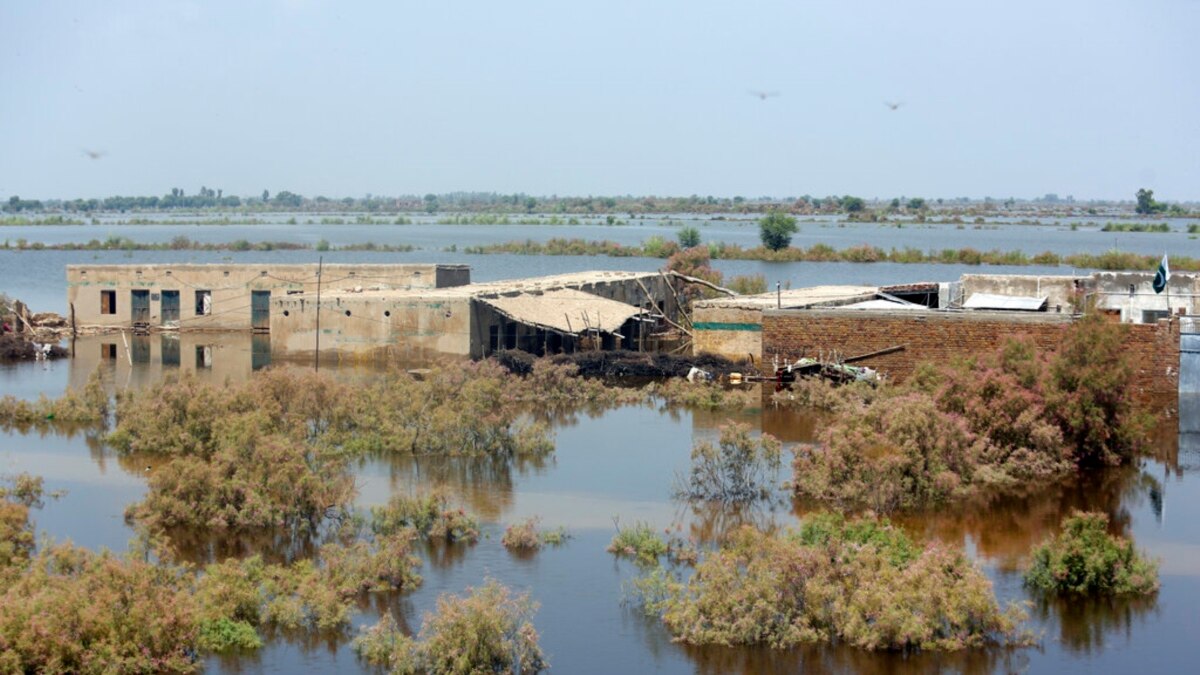Introduction
Pakistan, which is ranked as the fifth most vulnerable country to climate change on the Global Climate Risk Index, has numerous pressing environmental problems that have an impact on both its people and economy. Despite producing only 1% of global carbon emissions, Pakistan bears a disproportionate burden of climate change’s wrath. The monsoon, which is critical for the Pakistan’s agricultural and water security, is growing more irregular. Rising temperatures are affecting weather patterns, resulting in unpredictable cycles of heavy rains, severe floods, and long periods of drought. This is resulting in low crops yield, communities’ displacement, and negative economic impacts. According to a United Nations Environment Program (UNEP) report published in November 2023, climate change has raised surface temperatures, which has had a significant impact on traditional weather patterns, particularly monsoon rainfall.
Pakistan Floods 2022 and 2023
The impact of the climate crisis in Pakistan was brutally demonstrated by the irregular monsoon of 2022. Pakistan experienced unusually heavy rainfall during the monsoon season, over three times higher than the past 30-year average. Millions of people were impacted by the enormous devastation because of severe flooding and landslides that Pakistan has seen as a result of the monsoon rains. This flooding, which has been described as one of the worst in decades, damaged approximately 78,000 square kilometers of farmland, affected over 33 million people (roughly 15% of the country’s population) in 90 districts and caused almost eight million to be displaced. As of November 18, 2022, the Pakistan National Disaster Management Authority (NDMA) announced that the toll amounted to over 1,700 confirmed deaths and over 12,800 injured. Moreover, around one million houses destroyed as a result of the calamity, and the death of over a million animals adds to the serious and widespread effects of the disaster. According to the Government of Pakistan’s Finance Division’s damage assessment report, the damage and loss caused by floods in 2022 estimated to exceed US$14.9 billion, US$15.2 billion in GDP loss, and US$16.3 billion in total rehabilitation costs. The sectors that experienced the most damage of floods were housing ($5.6 billion), agriculture, food, livestock, and fisheries ($3.7 billion), and transportation and communications ($3.3 billion).

The recovery of 2022 floods was slow, and the country was struggling when the monsoon season of 2023 made matters worse. Balochistan and some districts of KP suffered the most destruction from flash floods and severe monsoon rains in July 2023. The disaster had left 283 people injured and 196 people dead in all of the provinces as of August 5, 2023. As a result of the floods, the World Food Program reported that out of 20.6 million individuals in need of humanitarian aid, 14.6 million needed emergency food assistance.
Food Insecurity
In Pakistan, a large portion of the population lacks consistent access to enough food that is both nutritious and sufficient, making food insecurity a serious problem. Pakistan’s food insecurity is largely caused by climate change. According to estimates, climate change will contribute to an 8–10% decline in agricultural productivity until 2040. The country is extremely vulnerable to risks related to climate change, and the country’s changing weather patterns have a negative impact on water availability, natural resources, and agricultural productivity. This is especially true for crops like rice and wheat, which will decline by 15–18% and 6%, respectively. According to the World Bank’s 2021 Climate Risk Country Profile, Pakistan’s yields in numerous essential food and cash crops, including cotton, wheat, sugarcane, maize, and rice, are expected to drop over the next decade.
Climate change has caused irregular monsoon in Pakistan, which has altered rainfall patterns and hampered crop growth, resulting in lower yields and crop failures. Inconsistent rainfall also makes it difficult for farmers to organize their agricultural activities, which reduces overall agricultural production. This has greatly damaged the overall economy, and the 40% of Pakistan’s total labor force that works in agriculture which will probably decline dramatically in coming years.
Conclusion
Pakistan is dealing with a serious climate change crisis. Even with a low carbon footprint, the country is being forced to adjust to a fast changing environment to which it has barely contributed. Developed countries should provide international climate finance to help Pakistan with climate related challenges. Furthermore, to lessen the risks, Pakistan government must build its national capabilities through environmental considerations and integrating climate change into national development plans and objectives. Developing early flood warning systems, managing crops, and upgrading water management systems for efficient storage and distribution are all important steps to take. Pakistan must immediately adjust its infrastructure and activities to the new realities of climate change in order to avert future consequences.

Research Associate, Pakistan House



